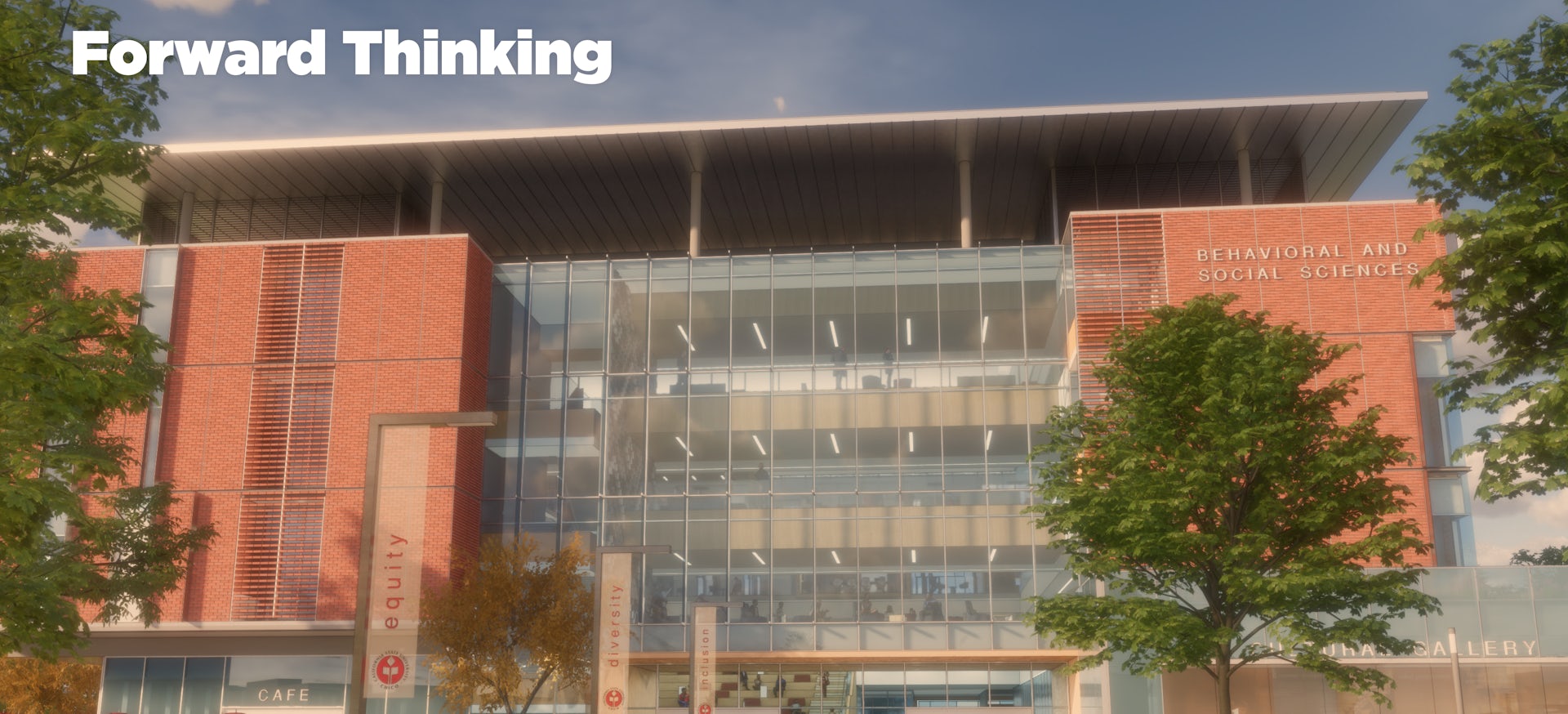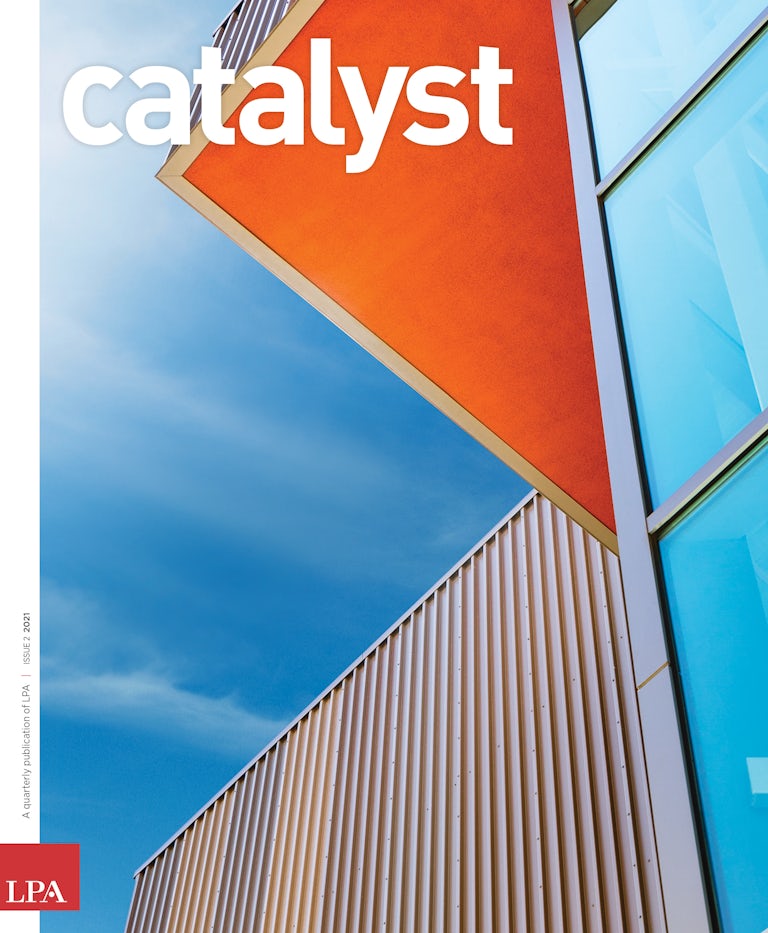Universities around the country are facing deadlines to eliminate fossil fuel use in buildings in the next 10 years. Here’s how to do it.
For many universities and colleges, net zero facilities are no longer an abstract concept. Students and administrators are mandating results, and target dates have been set to eliminate fossil fuels from campuses, in many cases by 2030.
It won’t be easy. Most public colleges and universities have limited resources to upgrade facilities in a significant way. Keeping up with everyday maintenance and operations demands is typically more than many facilities departments can handle. Available funds are focused on existing building upgrades to meet basic building functions and academic requirements, which places the challenge of tackling the reduction of fossil fuel consumption low on the priority list. New construction is often the most effective way for institutions to address the issue, as bigger budgets and marquee projects present an easier path to design buildings that deliver Net Zero Energy (NZE) results.
In a recent design exercise, LPA designers explored ways to develop an efficient academic university classroom building that met programming goals and gave administrators a clear route to achieve NZE. The process looked for ways to meet the ambitious target within the constraints of the budget and the limits of the site, while addressing the university’s larger educational, cultural and academic goals.
“We are always looking for opportunities for sustainable strategies that would help any institution get to NZE,” says LPA Director of Higher Education Steve Flanagan. “The goal is to design something that is within budget and can deliver on a net zero energy and carbon reduction goal from day one.”
The parameters of each campus project present distinct obstacles and opportunities, in terms of academic programmatic requirements, campus infrastructure, existing campus buildings, sensitive habitat, existing and new pedestrian and vehicular circulation, lifecycle cost and, of course, the initial capital cost. While energy efficiency is always a core goal, each design must provide a holistic solution to support a wide variety of campus priorities.
To meet 100 percent of the building demand with renewable energy and make a building self-sustaining, the energy goals must be incorporated into every aspect of the design, requiring an integrated approach, says LPA Design Director Franco Brown. Ideally, the net zero goal should be established in the master planning and ideation process, allowing institutions to scale the initiative and incorporate energy production into a larger campus grid.
“The challenge with net zero is that this is not something that you can easily add on to a building once the project is designed,” Brown says. “Net zero should not be an afterthought.”
The net zero goal — in particular, the almost inevitable need to generate power on-site — must drive many of the early decisions. Based on current technology, in most areas, the best way to produce energy is through solar photovoltaic (PV) panels. Many campuses don’t have adequate ground space — or at least ground space they are willing to give up — for solar arrays. Generally, in California, a PV array half the area of the gross square footage of the typical academic building is necessary to offset the building’s energy use. In other words, each 100,000 square feet of enclosed space requires 50,000 square feet of PV to generate enough energy to power a building’s operations (averaged between high and low demand).
Without any site area available for power generation, that basic equation dictates that the building itself must accommodate renewable energy arrays, and that will drive decisions about its mass and shape.
This is easy on one- or two-story buildings but grows more difficult as the building gets taller and the roof surface gets smaller, proportionate to the total enclosed square feet.
The design exercise artfully found ways to maximize the building footprint on the site while still presenting a clear path to net zero. The design provides a twist to the traditional rooftop-mounted HVAC equipment with the addition of a 45,000-square-foot “solar umbrella,” which shades the rooftop mechanical equipment and provides clear roof surface area to generate enough energy for a four-story, 90,000-square-foot facility. Louvered walls provide air flow to the enclosed mechanical systems below. To address administrators’ concerns, the design allows an outside vendor to own and maintain the PV panels and systems through a power purchase agreement (PPA), freeing the school from maintenance and replacement obligations and reducing initial installation costs.
The building is organized like a square donut, with classrooms and offices on the perimeter and a large, covered atrium in the middle. The main circulation system wraps around the atrium in the form of balconies, giving access to classrooms, offices and study nodes. The center of the building becomes the new campus living room, with social areas and collaboration and event spaces. A grand social staircase creates more usable space for students to gather and hang out, while linking the different departments. Translucent panels in the center of the solar umbrella allow natural light to fill the atrium.
“We integrated the need for net zero into the program by placing the large PV array over the central void, which became a contemporary interpretation of the ancient Roman forum, where social science students can exchange ideas and stage lectures,” Brown says.
Conservation and efficiency are baked into every aspect of the design. Exterior deck and balconies expand the usable space outside without adding to the energy load. A 6,500-square-foot pollinator green roof improves the ecosystem and provides natural cooling to the spaces below. The landscape also collects and treats rainwater from the high roof.
The design represents the two-pronged approach necessary to achieve net zero. First, passive strategies are maximized to reduce the building’s energy consumption. The building is oriented with more glass facing north and south, with vertical shades to reduce heat gain and glare on the building’s south side. Windows for the harsher east and west exposures are smaller, but they still maximize opportunities for natural light. The glass, shading and insulation all play key roles in preserving heat during cold months and reducing heat gain in the summer. Efficient mechanical systems, light fixtures on dimmers and timers, and occupancy sensors to automatically dim lights during daylight hours help cut electricity usage and operating costs.
To achieve 100 percent reduction in energy use and make the building self-sustainable, the energy goals must be incorporated into every aspect of the design, requiring a holistic, integrated approach.
“The building is going to be in operation 24/7 for 50 to 100 years,” Flanagan says. “Making it as efficient as possible operation-wise is the key to really being sustainable.”
But passive measures alone won’t get a building to net zero. The second prong involves producing energy on-site. The design successfully integrates the requirement for a very large area of photovoltaics on the solar umbrella. Unlike other environments in which renewable energy is expressed and put on display, on this historic campus the PV array sits discreetly atop the building. It does not distract visually, nor does it take space that could be used for programming or outdoor amenities, the lifeblood of every campus.
Most important, the building doesn’t sacrifice programming for the net zero goal. The design does provide flexibility, allowing the university to achieve NZE on day one or to easily adapt the building to net zero in the future.
The design will also lower the cost of operating the building, producing savings for years to come. Only about 10 percent to 20 percent of the life of the building is the initial cost of construction; the majority of a university’s expenditure is incurred during the building’s life cycle.
“A net zero building will reap benefits for 30 to 40 years at a minimum,” Brown says. “Decisions made early in the design process can pay big dividends and create a more sustainable campus.”


















